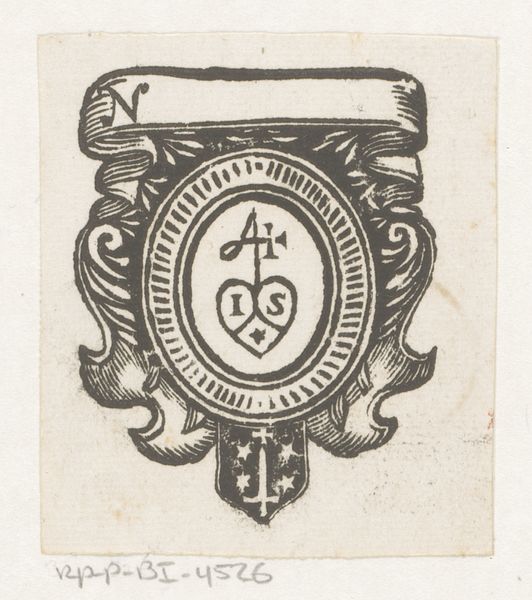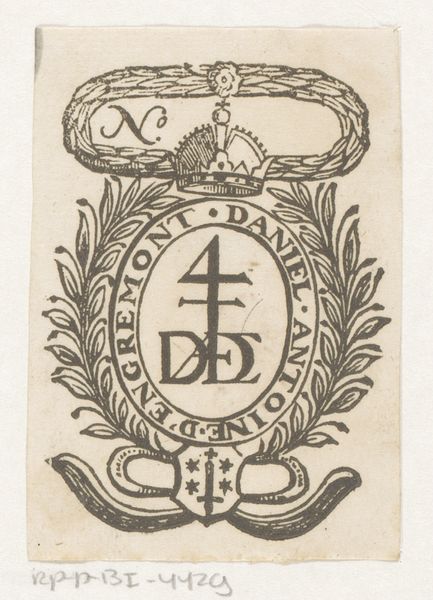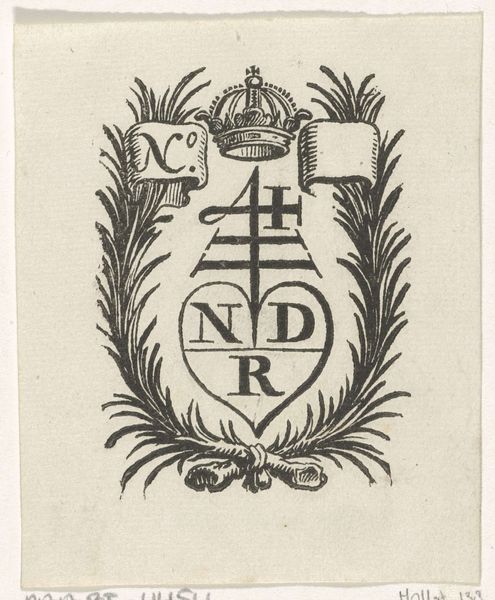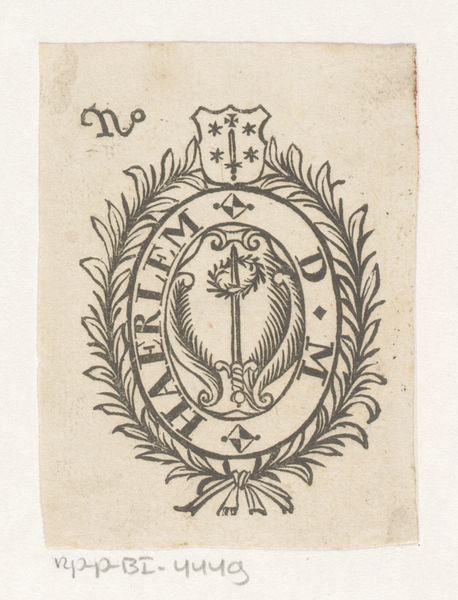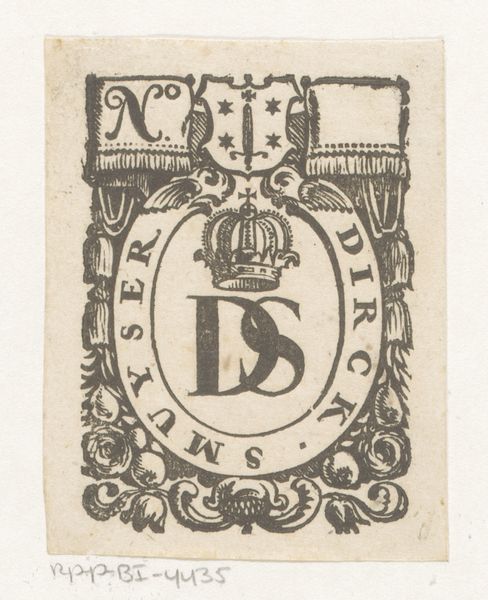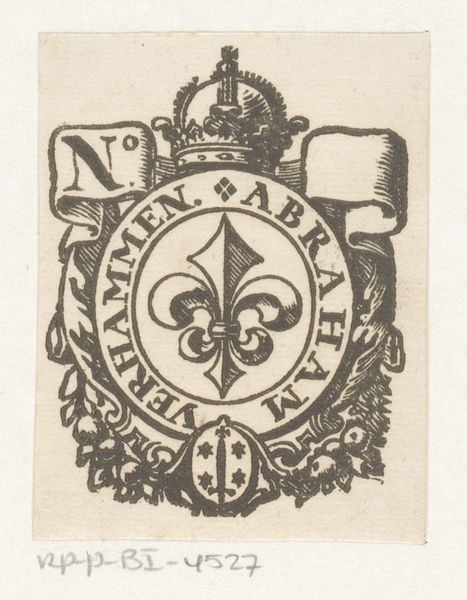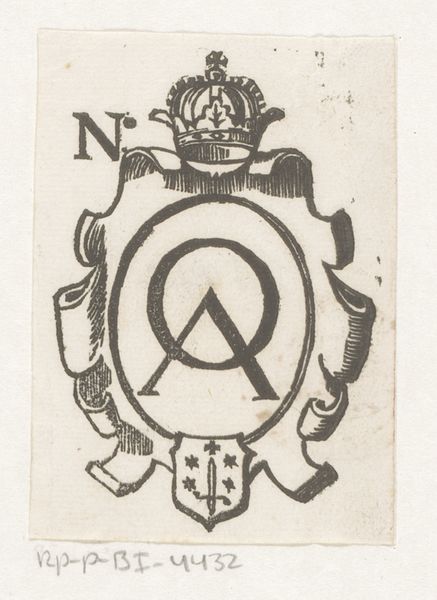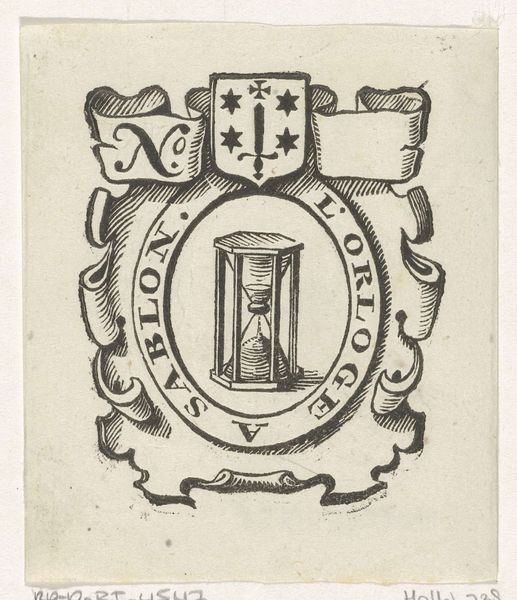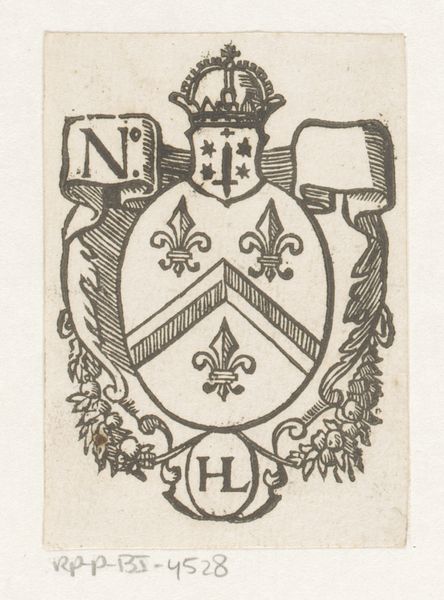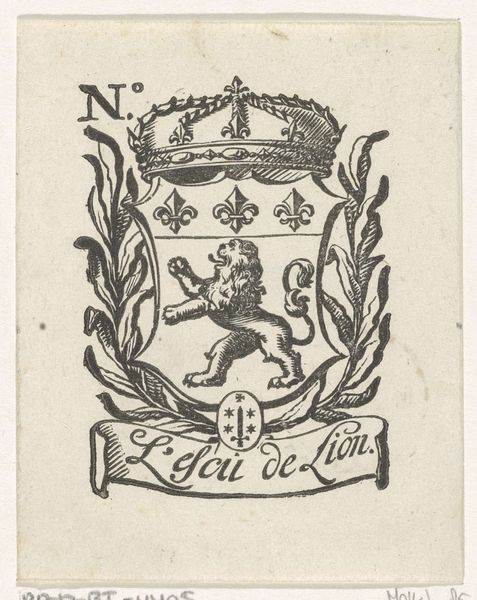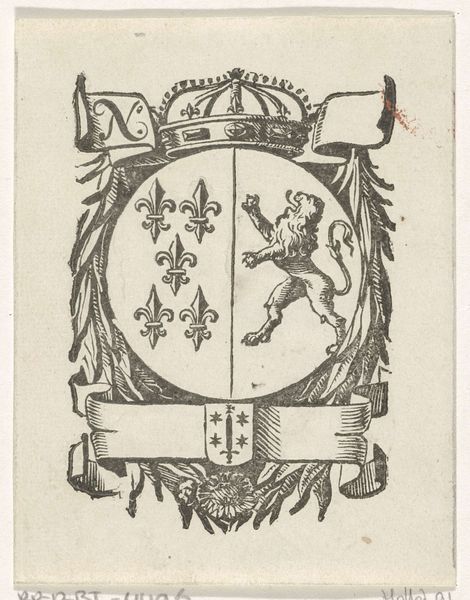
drawing, ink, engraving
#
drawing
#
baroque
#
pen sketch
#
ink
#
engraving
#
calligraphy
Dimensions: height 65 mm, width 56 mm
Copyright: Rijks Museum: Open Domain
Editor: This is a 17th-century piece called "Vignet met een monogram en een kroon" – "Vignette with a Monogram and a Crown" – made by an anonymous artist using drawing, ink, and engraving. The delicate lines feel incredibly precise; how do you read this work? Curator: For me, it is primarily about the process, the repetitive labor required to produce such a precise image, and the materials involved – the ink, the paper, the engraving tools. How the status of printmaking during that period influences the perceived value. Think about the social context: who would commission such a monogram, and for what purpose? The crown immediately signifies authority and perhaps also points to the consumption habits of a specific class. Editor: So, you are focusing on the means of production as a form of historical inscription. Curator: Exactly! What’s intriguing is how printmaking was often seen as "craft" rather than "high art." Analyzing its materials and the work that went into this piece can challenge such assumptions. Consider the contrast of high society being related to the low processes of reproduction of graphic design, so in demand at that moment in history. What do you make of the "N" in the top-left corner? Editor: I hadn’t considered that! Maybe an inventory number to show that it has already been used? I suppose, previously, I was mainly paying attention to the aesthetic element of the leaves around the main subject. Curator: Exactly. The visual details such as the leaves draw attention, but consider their manufacture and how each copy replicates these features and also ask if that detail had some meaning, and, if it did, was its message maintained. That is, how has our perception of art impacted that symbolic meaning. Editor: That perspective provides an entirely new way of analyzing not only this vignette, but also many other types of work! I hadn’t realized the status implications involved in printmaking. Curator: Absolutely. The work asks how material production shaped our interpretation and also asks of that interpretation itself how has it reshaped this material world, a world that still talks to us today.
Comments
No comments
Be the first to comment and join the conversation on the ultimate creative platform.
